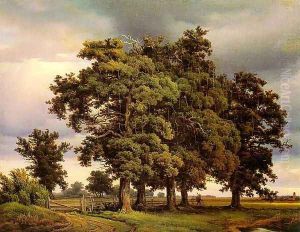Georg - Heinrich Crola Paintings
Georg Heinrich Crola, often simply known as Heinrich Crola, was a 19th-century German landscape painter whose work is characterized by its romantic sensibilities and its focus on the natural beauty of the German countryside. Born on January 29, 1804, in Dresden, Crola developed an interest in art at a young age. He initially trained as a painter in his hometown under the tutorship of Caspar David Friedrich, one of the most significant figures in the German Romantic movement. Friedrich's influence on Crola's work is evident in his dramatic and emotive landscapes that often explored the sublime aspects of nature.
Crola's career spanned several decades during which he traveled extensively throughout Germany, capturing the changing moods of its forests, mountains, and rivers. His paintings typically feature a meticulous attention to natural detail, a hallmark of the Romantic movement's emphasis on the awe-inspiring power of the natural world. Crola was particularly skilled in depicting the interplay of light and shadow, which added a sense of depth and mystery to his scenes.
Throughout his life, Crola exhibited his work in various shows and earned a degree of recognition among art enthusiasts and critics. Despite this, he never achieved the same level of fame as some of his contemporaries. After his death on September 18, 1879, Crola's contributions to the Romantic movement were somewhat overshadowed by the works of other artists. Nonetheless, his paintings remain a valuable part of Germany's cultural heritage, offering insight into the country's landscape and the artistic trends of the time. Collectors and museums continue to preserve and display Crola's works, ensuring that his role in the development of Romantic landscape painting is not forgotten.
